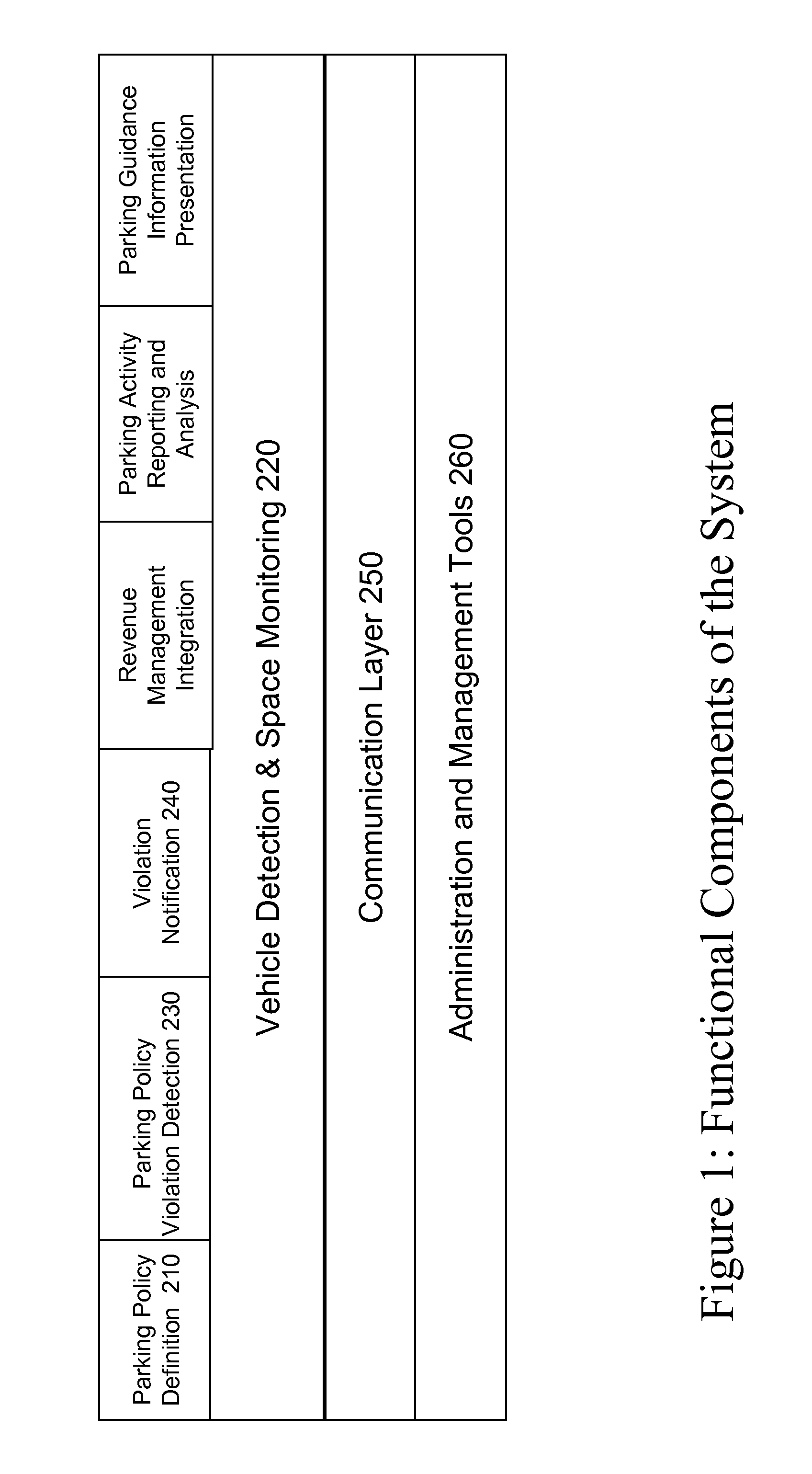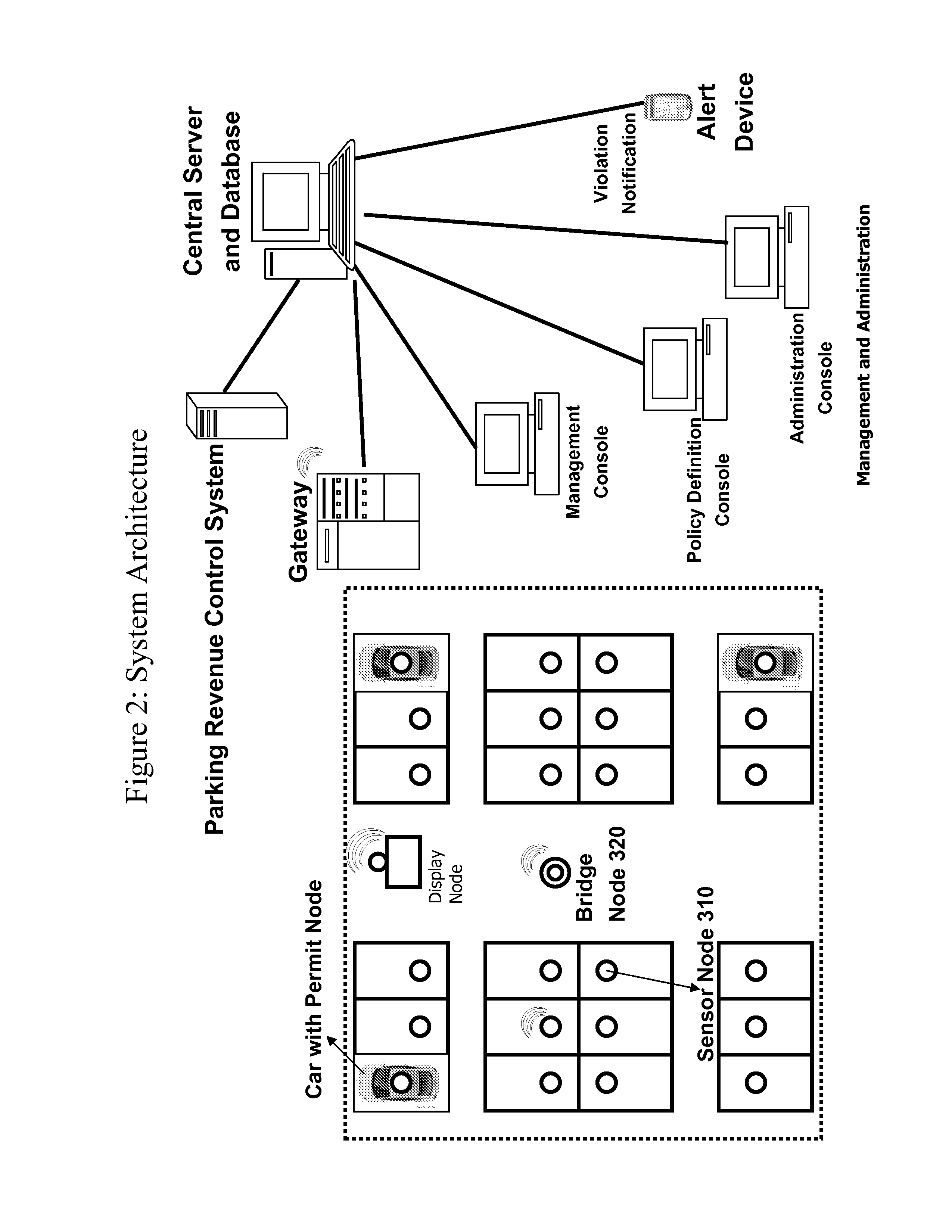Automated Parking Policy Enforcement System
a technology of automatic detection and enforcement system, applied in traffic control systems, transportation and packaging, instruments, etc., can solve the problems of increasing pollution, increasing difficulty in finding available parking, and wasting visitors' time, and achieves easy installation, accurate readings, and energy saving
- Summary
- Abstract
- Description
- Claims
- Application Information
AI Technical Summary
Benefits of technology
Problems solved by technology
Method used
Image
Examples
Embodiment Construction
[0053]A system of the invention retrieves parking occupancy information from parking space sensors, identifies available parking spaces, disseminates parking availability information to commuters, detects any parking policy violations, creates parking violation alerts and disseminates them to appropriate alert devices. Alert devices could be a monitoring console viewed by parking facilities management staff or handheld devices such as PDA, cell phone, or pager carried by parking enforcement personnel. Alert devices could also include other systems that accept the alerts via an integration application programming interface (API). Administration and management tools are vital to make sure that the functional components are performing correctly.
[0054]Functional Overview
[0055]FIG. 1 shows the functional components of the system. The components of the system include parking policy definition 210, vehicle detection and parking space monitoring 220, parking policy violation detection 230, ...
PUM
 Login to View More
Login to View More Abstract
Description
Claims
Application Information
 Login to View More
Login to View More - R&D
- Intellectual Property
- Life Sciences
- Materials
- Tech Scout
- Unparalleled Data Quality
- Higher Quality Content
- 60% Fewer Hallucinations
Browse by: Latest US Patents, China's latest patents, Technical Efficacy Thesaurus, Application Domain, Technology Topic, Popular Technical Reports.
© 2025 PatSnap. All rights reserved.Legal|Privacy policy|Modern Slavery Act Transparency Statement|Sitemap|About US| Contact US: help@patsnap.com



